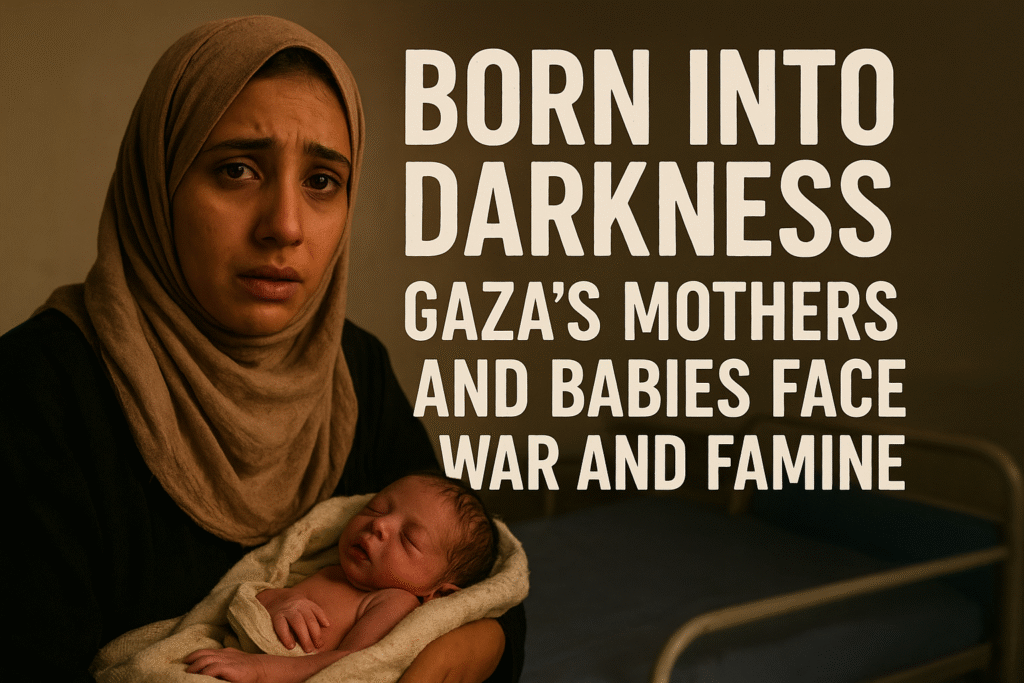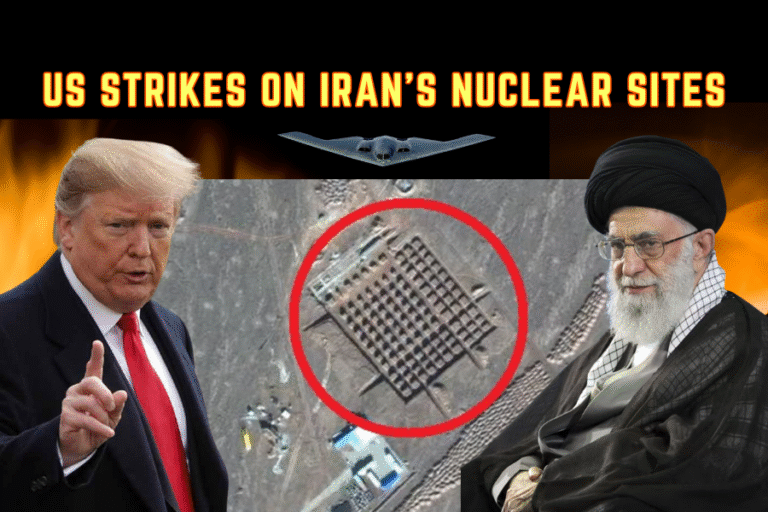By Ch Haroon Rashid
Published: August 5 Sep, 2025 , Lahore Pakistan
At a dimly lit hospital in Rafah, 28-year-old Mariam cradles her newborn daughter against her chest, swaddled in a thin blanket. The baby is just two days old, born after a difficult labor with no pain relief and no incubator to keep her warm. The only sound in the ward is the hum of a small generator that may fail at any moment. Outside, explosions echo in the distance, and Mariam whispers, “I never thought I would give birth in a war zone… like this.”
Her story is one of thousands. Humanitarian agencies estimate that 170 to 180 babies are being born every day in Gaza—many in hospitals running on dwindling fuel and scarce medicine. The health system, battered by relentless bombardment and a suffocating blockade, has been described by aid workers as being in “total collapse.” Read more in Gaza Cries: Humanity Has Died.
A Timeline of Warnings
2 April 2025 — Save the Children warned that around 130 babies were being born every day in Gaza, even as hospital access shrank and maternity wards came under bombardment. The charity called it “an unimaginable challenge for doctors and midwives.”
17–22 July 2025 — UNFPA reported a steep decline in recorded births—17,000 births in the first half of 2025, a 41% drop from pre-war years. They highlighted that many mothers were giving birth outside health facilities or without skilled attendants.
22–24 July 2025 — Médecins Sans Frontières (MSF) shared photos of premature babies sharing incubators in northern Gaza. Oxygen cuts from fuel shortages led to avoidable neonatal deaths, doctors said.
27 July 2025 — The World Health Organization (WHO) reported malnutrition rates reaching “alarming” levels, warning that maternal malnutrition increases the risk of hemorrhage, stillbirth, and complications at birth.
29 July & 4 August 2025 — Save the Children revealed that 43% of pregnant and breastfeeding women at their clinics were malnourished, while cases of acute child malnutrition skyrocketed tenfold in four months.
22 August 2025 — UNICEF, UNFPA, and the Integrated Food Security Phase Classification (IPC) declared that famine conditions now exist in Gaza, citing catastrophic hunger among women and infants.
28 August 2025 — OCHA’s Situation Update #317 confirmed that most maternity hospitals are either destroyed or only partially functional, with medical access blocked in many areas.
The Collapse of Care
Before the war, Gaza’s maternity wards were strained but functioning. Today, hospitals are overwhelmed, running on a fraction of needed fuel, and lacking basics like magnesium sulfate, sterile surgical kits, and antibiotics. Health workers recount performing emergency C-sections by flashlight and delivering babies on bare floors.
“Every day, we see preventable deaths,” a Rafah-based doctor told reporters in July. “Premature babies die because there’s no incubator, mothers die because we have no blood bags.”
The blockade has left many women unable to reach hospitals, especially in northern Gaza, forcing home births in unsafe conditions. Aid workers also warn of a growing mental health crisis: women are giving birth while deeply traumatized, some after losing entire families.
Malnutrition and Famine
By late July, nearly half of Gaza’s pregnant women were malnourished. Mothers cannot produce enough breast milk, and formula is prohibitively expensive or unavailable. This has created a vicious cycle: undernourished mothers give birth to underweight babies, who are then at higher risk of infection, dehydration, and death.
The famine declaration by IPC and UNICEF in August confirmed what health workers already knew—Gaza’s most vulnerable are starving. Babies are being born into hunger and instability, with humanitarian corridors failing to guarantee safe passage for medical supplies. See our full investigation in Gaza Starvation: Slow Poisoning.
The Call for Urgent Action
International agencies have repeatedly called for safe corridors, fuel deliveries, and medical access to stabilize maternal and newborn care. Field hospitals run by the ICRC and others provide some relief, but these are temporary lifelines in a shattered system.
Without immediate intervention, aid groups warn, Gaza faces a wave of preventable deaths. Babies like Mariam’s daughter are not dying from congenital defects or untreatable disease—they are dying from power cuts, empty supply rooms, and a war that has turned motherhood into a daily gamble for survival.
Closing Reflection
Each statistic represents a life. A newborn struggling to breathe in a darkened ward. A mother delivering on a cold floor, surrounded by rubble. Gaza’s maternity wards have become silent battlegrounds, where health workers fight a losing war against famine, disease, and relentless violence. Unless humanitarian access is restored, these stories will no longer be of survival, but of loss.
___________________________________________________
About the Author

Ex-Military Officer | Tamgha-e-Imtiaz (M) Recipient Political Analyst | Regional Security Expert Writer & Digital Creator on Geopolitics and Power Dynamics Cross-Topic Commentator with a Psychosocial Perspective








Yeah bookmaking this wasn’t a bad determination outstanding post! .
I have read some excellent stuff here. Certainly price bookmarking for revisiting. I surprise how a lot attempt you place to create this type of fantastic informative website.